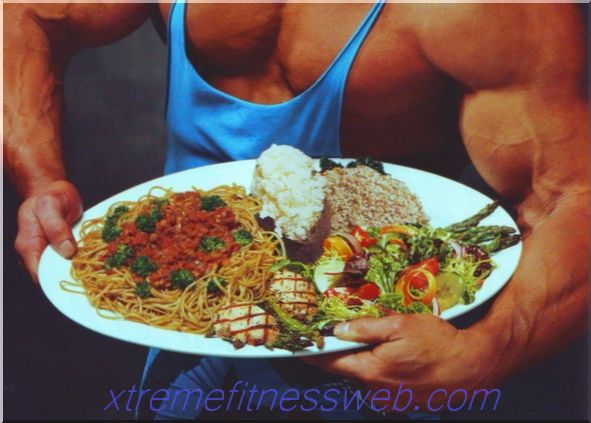
Fried foods are not necessarily unhealthy if you use the right types of oil or fat for frying.
Some trans fats strengthen the heart and also promote weight loss and even counteract the development of cancer.
Many ingredients of brown rice are not bioavailable due to phytic acid. White rice is healthier.
Ketchup, which is free of fructose and other sugars, is an excellent source of lycopene.
Most bacon is monounsaturated fat, known as oleic acid, similar to that found in olive oil.
Beer is healthier than wine. Both of them contain many nutrients, but beer has fewer calories.
Content
- 1 Outdated data
- 2 1. Fried foods
- 3 2. Trans fat
- 4 3. White rice
- 5 4. Ketchup
- 6 5. Bacon
- 7 6. Potato
Outdated data
External simplicity is often misleading, especially when it comes to dietary advice on the Internet. Too often, nutritionists give superficial nutrition tips that, when checked, turn out to be shortsighted, flimsy, full of inconsistencies and outdated data. To illustrate this statement, consider a number of food categories that you have been advised to avoid as “harmful, " but they are actually useful.
1. Fried foods
We are constantly told that fried should be avoided, although each of us has relatives in the village who have been living for a hundred years, despite scrambled eggs with bacon, pancakes and lard every day before leaving for work. All these long-lived peasants are proof that fried foods are no worse than any other. Indeed, food cooked in oil is more caloric, however, the body needs fat to absorb many fat-soluble vitamins such as A, D, E and K, as well as beta-carotene (sweet potatoes), lycopene (tomatoes) and lutein ( spinach and cabbage).
But, you should still adhere to the following rules.
For example, use only those oils that have a high “smoke point” —this is the temperature at which the oil begins to smoke. Excessive heating of the oil changes its chemical composition, which can weaken its beneficial properties, so use olive oil (in this case, refined, not first-pressed), avocado, walnut, peanut or sesame oil for high-temperature frying. Other fats and oils, such as cream or coconut, have too low a smoke temperature for cooking at high temperature.
It is said that high temperatures can turn butter into a bad variety of trans fats, however, this is only possible with repeated use of the same oil. For low-temperature frying, you can use coconut and butter made from milk from grass-fed cows, or extra virgin olive oil.

2. Trans fat
A few years ago, no one knew about the existence of trans fats. Now everyone knows these fatty harbingers of a heart attack, which are hiding in baking, microwave popcorn and margarine, ready to grab your arteries from the inside. These fats are quite rare in nature, but they are a common by-product of industrial food production. They are feared because of the double threat they carry to the heart, raising the level of bad cholesterol and lowering the level of good.
However, few people know that trans fats are actually beneficial for the health of the cardiovascular system and, in addition, contribute to the burning of fat and have anti-cancer properties. One group of such beneficial trans fats is known as conjugated linoleic acid, or CLA. CLA is found in large quantities in animal meats and dairy products, and is also produced in small quantities by our body.
Numerous studies show that CLA really reduces the risk of cardiovascular disease, prevents the development of type II diabetes (at least reduces the risk level) and even reduces the growth and metabolic spread of tumors. In addition, scientists believe that CLA can reduce the amount of fat in the body and increase muscle mass.
Although CLA is available as a dietary supplement, it is found in dairy products and grass-fed animal meat in an amount 3-5 times higher than its level in industrial-fed animal meat.

3. White rice
Brown rice is a staple food for fans of a healthy lifestyle, and brown rice is admired as smuggled vinyl by Grateful Dead. These people will tell you that brown rice contains a lot of protein. They will say that it has a lot of fiber, which will give you strong and proud stools. They will say that it does not increase blood sugar, like white rice. Suppose they are right, but with the exception of a few small details.
Yes, brown rice does contain protein, but in a negligible amount. It is better to get it from sources of animal origin. Brown rice contains fiber, but it is best obtained from more valuable nutritious sources, such as fruits and vegetables. And lastly, it really doesn’t almost raise blood sugar, but no one eats only brown rice, unless there is nothing more to eat. On the contrary, it is eaten with meat or vegetables, or with a small amount of oil, and all these supplements increase blood sugar.
There is one very important circumstance that makes brown rice a problematic product - the presence in its composition of phytic acid, which gives brown rice its color. Phytic acid simply captures or creates compounds with minerals and, in addition, inhibits the enzymes that are needed to digest food. As a result, many useful elements become biologically inaccessible for assimilation.
Therefore, white rice, despite propaganda, is an excellent food, especially for athletes. White rice is rich in vitamins (in a digestible form), it does not cause allergies, bloating and other digestive problems, which are often associated with cereals in general.

4. Ketchup
Let's go back to the beginning of the 80s in the USA. The government in the early 80s in the US legally permits the inclusion of ketchup and other sauces like vegetables in school lunches. Parents and nutritionists took this with hostility. Despite attempts to classify it as a healthy diet, public opinion has long assigned ketchup the label of junk food, which remains to this day.
The bottom line is that the idea of the government was not so stupid (except for the fact that the main goal was to cut costs), because ketchup, if you can find a brand without adding sugar, fructose or anything else, is very useful thing. Phytochemical lycopene is an antioxidant that is 100 times more powerful than vitamin E, found in tomatoes and other bright red vegetables and fruits. Unfortunately, lycopene is poorly absorbed in its natural form, which makes processed tomatoes, which are found in large quantities in ketchup, the best source of bioavailable lycopene.
Lycopene helps reduce the incidence of strokes, cardiovascular disease, diabetes, osteoporosis, male infertility, and prostate cancer, so look for ketchup that contains tomatoes, vinegar, salt, and spices and consume it completely freely. Add it to regular foods like cutlets, as well as eggs and grilled meat. Season them in soup and fries.

5. Bacon
In terms of the nutrient composition that is really important for health, foods like organic meat are at a fairly high level, along with certain herbs and spices, as well as nuts and seeds. The problem is that most residents of developed countries are not interested in eating organic meat flavored with herbs and spices in such quantities that you will feel sick from parsley, sage, rosemary and thyme. However, pork contains many nutrients, especially bacon.
However, let's get back to the negative sides of fat. Bacon contains mostly healthy saturated fats and monounsaturated fats, mainly oleic acid, which was found in olive oil. It is only necessary to clarify that you should consume grass-fed pork instead of industrial waste. If you find it, sometimes try to make a sandwich with bacon, tomato and spinach for dinner - it's just a jumble.

6. Potato
The Harvard guys compiled data from a vast population of people with various diseases. Among all other discoveries, they linked potato consumption to obesity, blaming it for spikes in blood sugar levels. The bottom line is that many other types of food lead to even sharper spikes in blood sugar levels, and yet they are associated with a healthy weight. This is a common problem among scientists - neglect of the integrity of the picture. They mixed all the potato products in this study, including chips and french fries. No wonder potatoes have been linked to obesity!
However, as a result of another, more elegantly structured study, there was no relationship between potato consumption and obesity or other diseases.
Potatoes are actually healthy when cooked or baked (as well as fried in healthy oil and seasoned with sugar-free ketchup). Despite the not very bright color, which often serves as a sign of the presence of phytochemicals, potatoes contain many carotenoids and flavonoids, as well as a decent spectrum of vitamins. There is no need to remove it from the diet.
Despite rumors that all potato nutrients are in the peel, only 20% is contained there. Everything else is inside, although the peel contains quite a lot of fiber.








